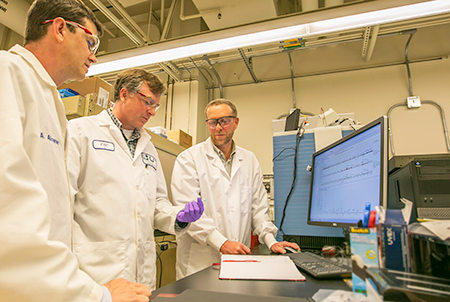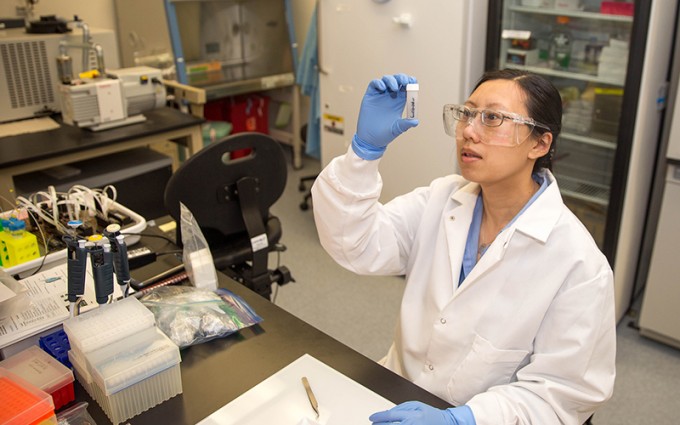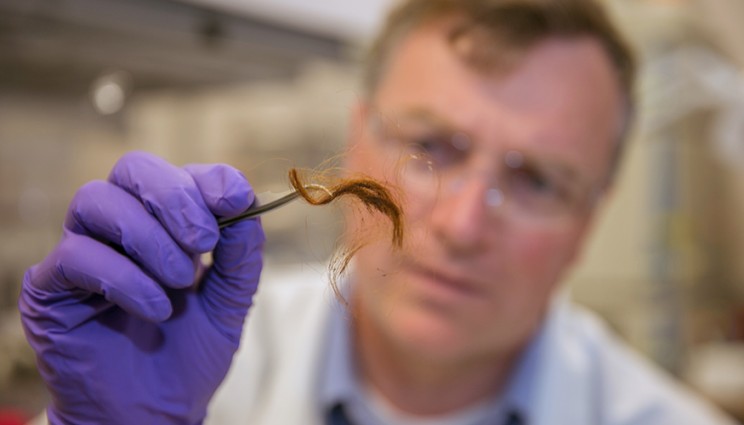A new forensic technique could help identify perpetrators of sexual assault using a kind of evidence typically deemed unreliable by the scientific community: hair.
Historically, analysis of hair samples has been fraught with far more controversy than crime shows might lead someone to believe. In 2013, the FBI, responding to the exoneration of three men whose hair-based convictions did not align with DNA evidence, announced what was lauded as a “historic” and “unprecedented” partnership with the U.S. Department of Justice, the Innocence Project, and the National Association of Criminal Defense Lawyers. The collaboration reopened an investigation into prior criminal convictions that had been decided, at least in part, by forensic analysis of hair.
Two years later, it admitted to significant errors. Of the cases it examined, the FBI estimated that its own agents and analysts had submitted erroneous statements or testimony based on faulty science in at least 90% of trial transcripts. In its press release, the agency quoted a director of The Innocence Project, who called the over-reliance on hair analysis in court no less than “an epic miscarriage of justice.”
Analyzing hair is a frustrating task for forensic scientists. First, hair lacks the DNA found in the nucleus of a cell, the gold standard for human identification. The DNA present in the cell’s mitochondria, which are found in hair, only passes down from mother to child and cannot necessarily serve as conclusive identification. DNA also degrades quickly, so forensic analysts often simply cannot use strands of hair left out in the sun or cold, or hairs that have aged.
In the past, scientists often examined hair appearance instead, comparing two samples under a microscope. Many analysts and agents testified in court that the samples came from a particular suspect based on qualities such as color, coarseness and straightness; without a method of definitively measuring the difference between one hair and another, courts were forced to trust the scientist’s testimony, rather than the reliability of the evidence itself.

New Tool for Sexual Assault Cases?
A recent breakthrough from Lawrence Livermore National Laboratory could provide the forensic community with a new quantitative method to identify perpetrators based on a single human hair from anywhere on the body. The findings, published last month in Scientific Reports, build on previous research that allowed LLNL scientists to identify a person from a human hair based on the information contained in its proteins, which are more durable than DNA and can tell a scientist about mutations in the DNA itself.
“The drive is to get away from subjective kinds of analyses,” said Deon Anex, group leader at the Forensics Science Center at LLNL (Anex credited chemist Fanny Chu, a Livermore Graduate Scholar, with the majority of the study’s findings.) What the group’s new technique would offer, he said, is a way of analyzing hair samples that would not rely on any scientist’s opinion, how many years of experience they have, or their persuasiveness in court.
Perhaps most importantly, Anex said, the method could provide law enforcement agencies with a new tool to use in the analysis of sexual assault cases. Tying a perpetrator to a rape using traditional forensic techniques is often challenging, since fluid samples taken from a victim frequently contain multiple contributors, complicating DNA analysis. LLNL’s technique can most likely be used on single hairs from anywhere on the human body, a critical development for investigations in which scientists cannot identify hair origins by sight.
Pubic hairs contain especially high protein content, so any conclusions from protein-based analysis would likely be more reliable than for other kinds of hair. The accuracy of the technique hinges on how many protein markers are examined, and is measured by the probability that any two people might have the same match; the LLNL team aims for 1 in 10 billion.

LLNL’s protein-based identification method is not currently in use in any forensic labs, but Anex envisions creating a kit that would allow law enforcement agencies to perform the analysis in their own facilities.
That development, however, might still be several years away. Hair typically represents a small percentage of samples submitted for analysis in sexual assault cases, according to Tracey Dawson Cruz, professor of Forensic Science and chair of the Department of Forensic Science at Virginia Commonwealth University.
“Currently forensic labs are not equipped or trained for [protein-based] work, so this would be a significant shift for a lab and would likely not be pursued for such a minor sample type,” Dawson Cruz wrote in an email. “This, however, could change in the future as more and more work on protein identification is lending itself to forensic applications.”
